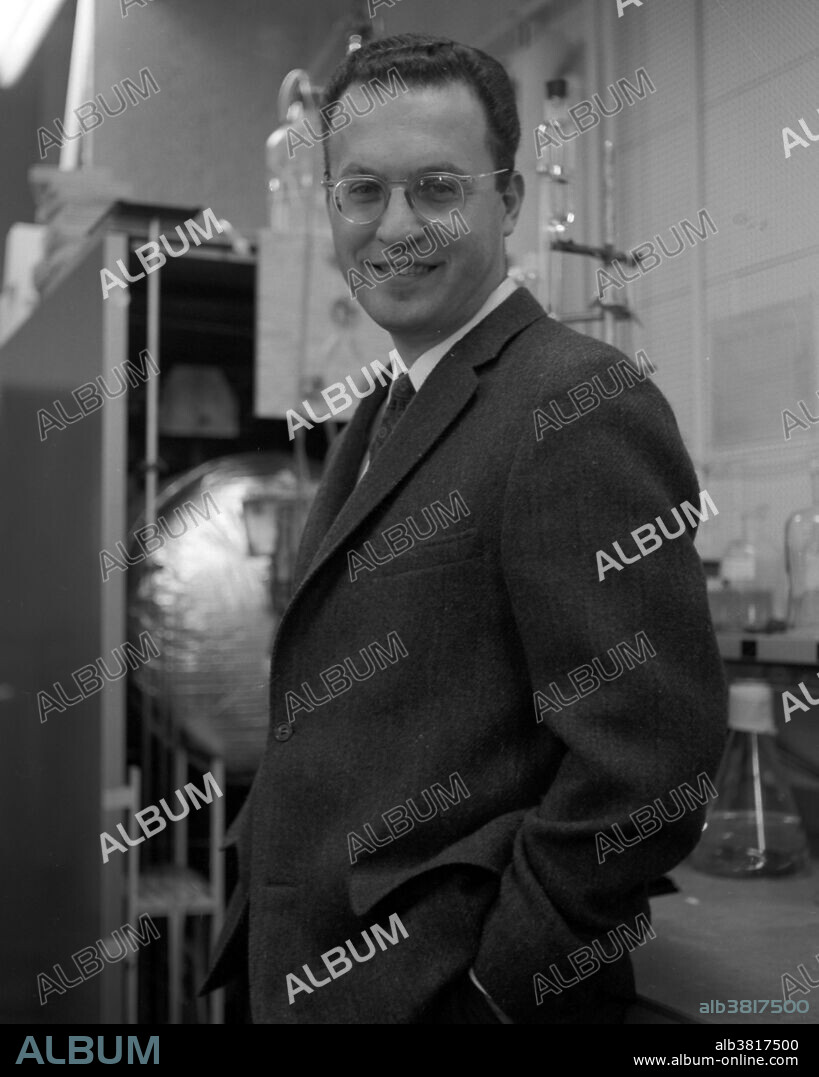alb3817500
Donald Glaser, American Physicist

|
Add to another lightbox |
|
Add to another lightbox |



Buy this image.
Select the use:

Title:
Donald Glaser, American Physicist
Caption:
Glaser, March 20, 1963. Donald Arthur Glaser (September 21, 1926 - February 28, 2013) was an American physicist, neurobiologist, and Nobel Prize Physics laureate (1960) for his invention of the Bubble chamber used in subatomic particle physics. A bubble chamber is a vessel filled with a superheated transparent liquid (most often liquid hydrogen) used to detect electrically charged particles moving through it. After winning the Nobel Prize, Glaser began to think about switching from physics into a new field and began to study biology doing experiments with bacterial phages, bacteria mammalian cells and studying the development of cancer cells. He automated the process of pouring out agar, spreading culture, and counting colonies of cells using a machine he called the dumbwaiter. It took photographs, administered chemicals, and had a mechanical hand to pick up colonies. As molecular biology became more dependent on biochemistry, Glaser again considered changing fields and began working on computational modeling of the visual system and visual psychophysics. He died in his sleep, in 2013, at the age of 86.
Category:
black & white • Science: Personalities
Credit:
Album / LBNL/Science Source
Releases:
Image size:
3600 x 4500 px | 46.3 MB
Print size:
30.5 x 38.1 cm | 12.0 x 15.0 in (300 dpi)
Keywords:
1960S • 1963 • 20 20TH XX XXTH TWENTIETH CENTURY • 20 XX TWENTIETH CENTURY • 20TH CENTURY • 20TH • 60 60'S DECADE SIXTY YEARS • 60 60'S DECADE YEARS SIXTY SIXTIES • 60'S • 60S • AMERICA • AMERICAN • BIOLOGIST • BIOLOGY • BLACK & WHITE • BUBBLE CHAMBER • BW • CELEBRITIES • CELEBRITY • COMPUTATIONAL MODELING • DONALD ARTHUR GLASER • DONALD GLASER • FAMOUS PEOPLE • FAMOUS • FIGURE • GLASER • HISTORIC • HISTORICAL • HISTORY • IMPORTANT • INVENTION • INVENTOR (MALE) • INVENTOR • MALE • MAN • MARCH 20 • MARCH 20TH • MEN • MOLECULAR BIOLOGIST • MOLECULAR BIOLOGY • NEUROBIOLOGIST • NEUROBIOLOGY • NOBEL LAUREATE • NOBEL PRIZE LAUREATE • NOBEL PRIZE RECIPIENT • NOBEL PRIZE WINNER • NOBEL PRIZE • NOBEL RECIPIENT • NOBEL WINNER • NOBEL • NOBELIST • NOTABLE • PEOPLE • PERSON • PERSONALITIES • PERSONALITY • PHOTO • PHOTOGRAPH • PHYSICIST • PHYSICS • SAVANT • SCIENCE • SCIENCE: PERSONALITIES • SCIENTIFIC • SCIENTIST • SIXTIES • SIXTIES, THE • TWENTIETH CENTURY • UNITED STATES • US • USA • WELL-KNOWN • XENON CHAMBER • YEARS DECADE'S SIXTY SIXTIES 60 60 1960
 Pinterest
Pinterest Twitter
Twitter Facebook
Facebook Copy link
Copy link Email
Email
